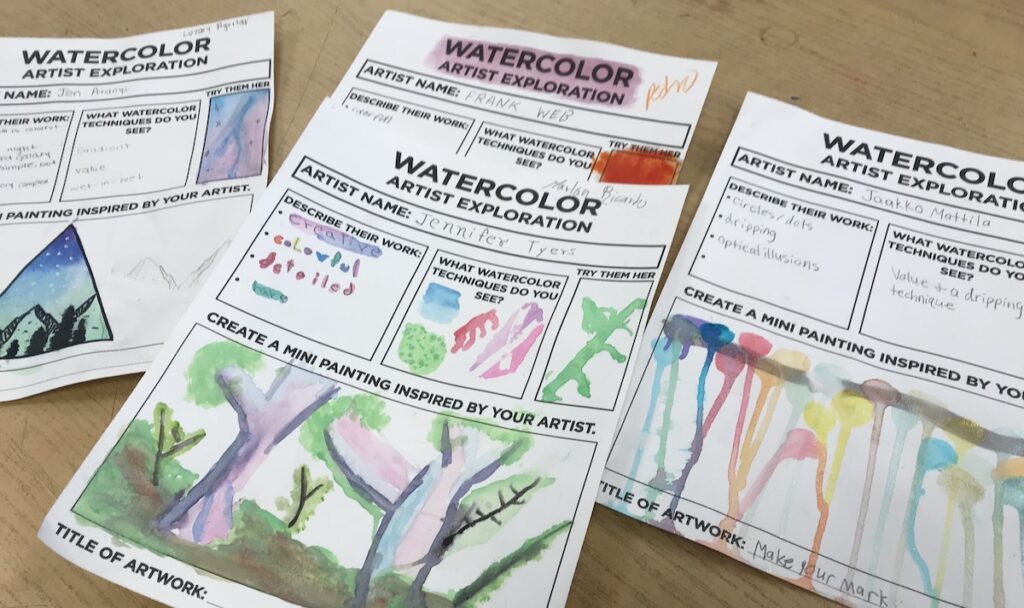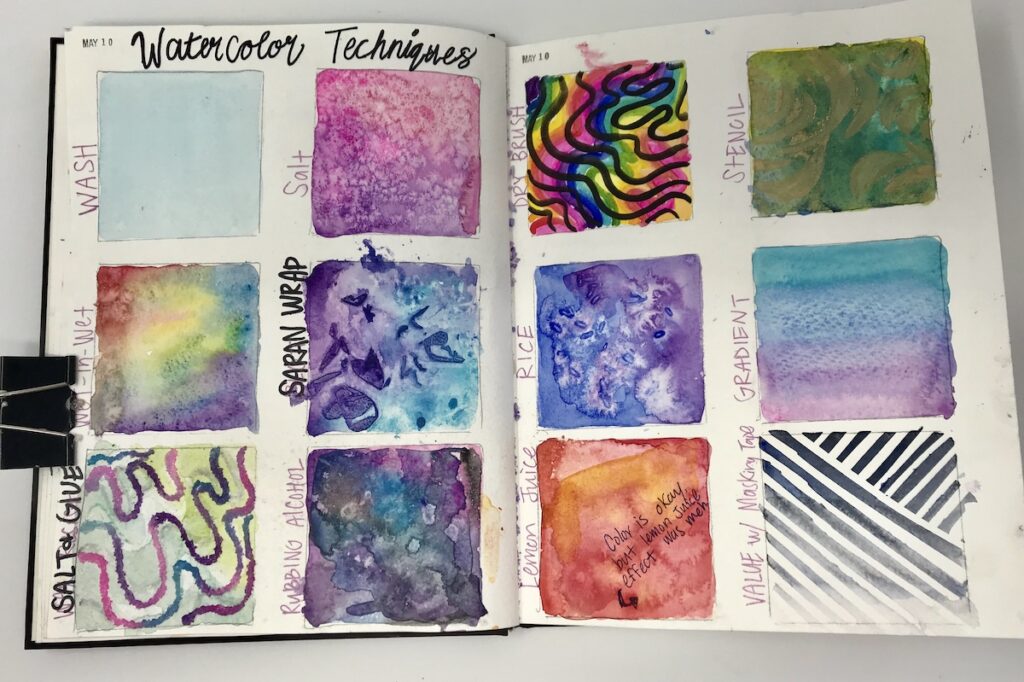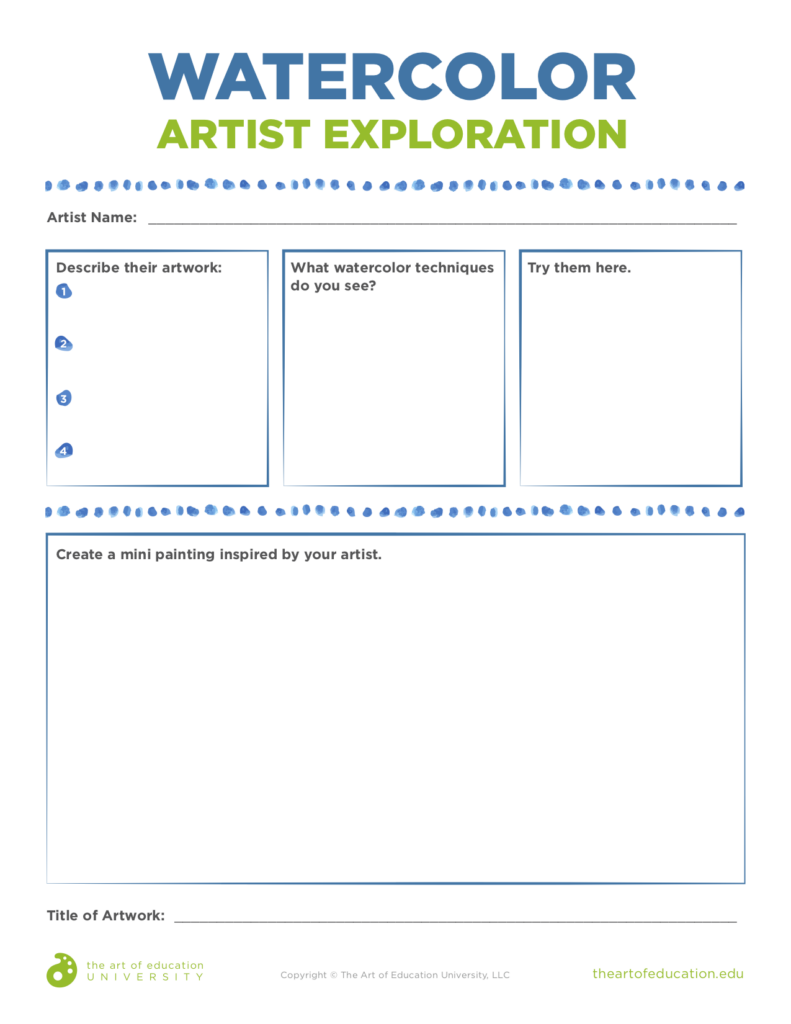Visual journaling is a practice shared by many artists and creatives that allows them to experience and document discoveries. Think of it like taking notes the creator wants to remember—but visually. A visual journal might also act as a safe space for students to plan, express, and try new things without the pressure of creating a finalized artwork. It becomes an artifact students can look back on to see their progress and growth.
However, for most middle school students, visual journaling is not going to come as second nature. Students are still learning skills, finding their artistic voice, and haven’t identified why documenting their process is essential in artmaking. Throwing a sketchbook at a student and asking them to create a visual journal isn’t realistic. They wouldn’t know where to start. But, the visual journaling process can work with your students with proper guidance and support.
3 Steps to Scaffold A Visual Journal Practice
1. Start with a Template

For students to buy into the journaling process, they must first understand its purpose. Since visual journals serve as a way to document new learning, showing its worth can be done in a variety of ways. An easy way to do this is by conducting an artist study. Let’s say your students are studying watercolor. They’ve learned about watercolor techniques and are now ready to start applying their learning. Instead of having students jump right into creating an artwork, try conducting an artist study with a provided template. You can use the download below.
Even though your students are using a provided template, they will still be able to document new learning by having a framework to jumpstart their journaling practice. For those students who are ready to start journaling, let them create without the template. They might use it as a guide for the information they might need but can begin documenting their creative process independently.
2. Do Guided Practice
Once your students are more familiar with the visual journal practice, it’s time to loosen the reigns. Forget the template, and let students start constructing their own pages with the new information and content you are teaching. To do this, you might first incorporate a little guided sketchnoting that includes notetaking with visual images. At first, students might mimic some of your notetaking, but as they get more comfortable with the process, they will start recording information creatively on their own.

Another approach to this is to create a flipped video of yourself teaching a new concept. If you are showing a new process, have students start and stop the video to document their learning at a self-guided pace. You might tell your students they have one or two class periods to watch the demonstration and record their findings. For those students who need extra guidance, consider giving them a list of prompts, questions, or ideas directly related to the content. Doing this will guide students to look for the specific content of importance.
3. Give Students Time

Once students have explored visual journaling with guidance, they should be ready to try the practice independently. If you truly want your students to take advantage of the process, you must give them time to practice their craft. To explore the process in an in-depth, meaningful way, consider offering your students an entire week to create in a visual journal. During this week, show your students how they might use different techniques like a collage in their journal. Provide them with requirements and themes to jumpstart their creating. Some students will be able to self-start, while others will need more support. In this case, give your students a checklist to complete. Here is a list you might give your students to help guide their visual journal creations.
- Show a theme in your journal.
- Create an artist’s study.
- Explore a new medium.
- Use direct observational drawing.
- Transform your notes from another class into a creative journal page.
- Explore these 50 visual journal prompts.
- Use text and words.
This short list will jumpstart your students’ practice, and you’ll be delighted to see how your students will come to love their journals. Teaching students to document their learning at a young age is crucial to the artmaking process. Keeping a visual journal goes beyond an ordinary sketchbook. It allows students to reflect on their practice and to see how their craft has developed over time.
Do you teach visual journaling to your students?
What value do you see in keeping a visual journal?
Magazine articles and podcasts are opinions of professional education contributors and do not necessarily represent the position of the Art of Education University (AOEU) or its academic offerings. Contributors use terms in the way they are most often talked about in the scope of their educational experiences.





